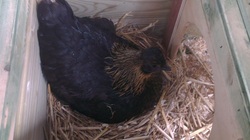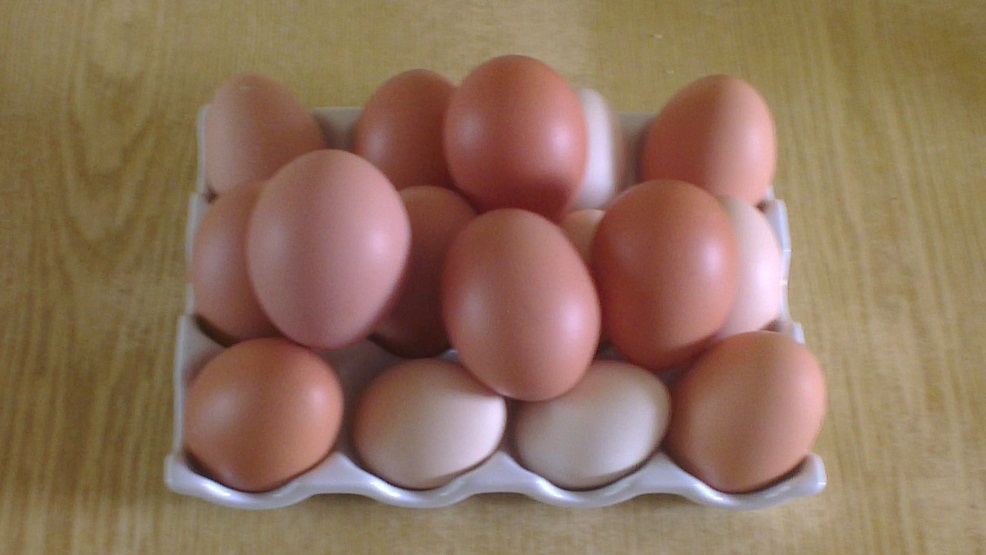My family began our adventures into chicken keeping late last year, with the purchase of 5 bantam hens from a local garden centre. Purchasing without much clue at what we were doing we selected two black Silkie’s, a light brown Silkie with a spectacular hair do and two white Light Sussex, all were purchased mostly on how they looked.
Very quickly some of our mistakes began to show. Our coop and run was purchased for us, and the run especially was obviously inadequate, both in size and design. Having to bend down and lean into the attached run to place the food and water was not ideal and the small size left very little room for our girls to exercise or scratch about on the short lived grass. The house although sufficient for the time being wasn’t designed to be easy to clean, and we had our doubts about its suitability.
Very quickly some of our mistakes began to show. Our coop and run was purchased for us, and the run especially was obviously inadequate, both in size and design. Having to bend down and lean into the attached run to place the food and water was not ideal and the small size left very little room for our girls to exercise or scratch about on the short lived grass. The house although sufficient for the time being wasn’t designed to be easy to clean, and we had our doubts about its suitability.

Almost immediately we began work on creating a bigger run for the hens. After much discussion, we settled on a 6’ high fence forming a large square at the bottom of the garden, it took a lot of work, but the benefit was huge. There is nothing like watching the hens happily run around their run and scratting in the ground. Watching the hens run around and forage makes the already unpleasant idea of chickens kept in cages one that just doesn’t make any sense.

The new run was later improved upon by a purpose built coop, one large enough that we could accommodate a growing flock and tall enough that we could walk in. Being able to walk into the coop greatly helps with cleaning, and it’s nice to be able to nip in on an evening and watch all the hens settling down on their perches.
The next hurdle we had to overcome was our broody hens. A broody hen is one that wants to hatch her eggs and will remain in the nest box, not laying eggs herself and denying the use of the nest to over hens who are still laying. Its has serious consequences for the hen because stubborn hens will remain in the nest hardly eating and drinking for weeks even months, loosing condition, as without a cockerel to fertilize their eggs there eggs will never develop, so there is no natural trigger to stop the broodiness. Unfortunately for us out of our first five hens, three of those the Silkie Bantams were considered the most broody prone hen you can get!
The first time we fell soft and bought in some fertilized eggs from the Internet, which our Silkie happily sat on raising us four out of the six adorable Rhode Island Red chickens. Not long into the process another of our Silkie’s decided she wanted to be broody, and with an order of five commercial hybrid hens already complete to prop up egg numbers, we didn’t have the room, nor were we ready for another brood of chicks. We decided that this time we would have to curb her from being broody, promising to give her a chance at raising her own chicks at some point in the future. It was a simple enough process, but on which we didn’t look forward to. The idea is to confine the broody hen away from nesting materials and after a short period, which has so far not lasted longer than three days and nights she snaps out of her broodiness and is undistinguishable from the rest of the flock, happily foraging about rather than being sat in the nest box all day.
The first time we fell soft and bought in some fertilized eggs from the Internet, which our Silkie happily sat on raising us four out of the six adorable Rhode Island Red chickens. Not long into the process another of our Silkie’s decided she wanted to be broody, and with an order of five commercial hybrid hens already complete to prop up egg numbers, we didn’t have the room, nor were we ready for another brood of chicks. We decided that this time we would have to curb her from being broody, promising to give her a chance at raising her own chicks at some point in the future. It was a simple enough process, but on which we didn’t look forward to. The idea is to confine the broody hen away from nesting materials and after a short period, which has so far not lasted longer than three days and nights she snaps out of her broodiness and is undistinguishable from the rest of the flock, happily foraging about rather than being sat in the nest box all day.

Since those early days we’ve gone through the process numerous times, and have now come to a point where we will be passing on some of our Bantams to a family member to lower our rate of having to deal with the broodiness, and to make room for larger fowl who will lay the size of eggs you would expect to see in the supermarket. We will be keeping just two of our Silkies who are family favourites, and intent to use them for what they are good at, being broody and wanting chicks J The idea is that when we are ready to bring in some fresh chickens we will have one of our inevitably broody hens raise them up for us, as naturally as possible. Having raised a cockerel from our last batch of fertilized eggs, we are now able to raise our own eggs, without buying in, and have another Silkie happily sitting on a clutch of eggs now.
We the addition of the Commercial Hybrids who happily lay on average one egg per hen every day, we have a plentiful supply of eggs. Not wanting any to go to waste we began selling some from the house, and we now can’t keep up with demand. We are often having to turn people away, which is unfortunate but we don’t sell the eggs at a loss and need to keep some back for ourselves.
It truly is a wonderful experience raising chickens, but there are some bumps in the road that it helps to be aware of before you begin. Chickens come in a wide variety of sizes, and may lay an average of one egg per week or six, it’s important to consider what you want out of your chickens and to select a breed that is appropriate for your needs. After breed selection you need to make sure you have all of the supplies you need to take care of them, they’ll need a coop, which is their house, and will use it for shelter during storms if you don’t have a separate shelter. Unless you have a secure garden where you can let them run around all the time, you’ll need an enclosed run to keep them safe from predators and to give you peace of mind whilst you’re not home. Laying hens require a laying pellet or mash, and a supply of grit to aide digestion and to give them a calcium boost to help them form strong egg shells. All of these supplies are readily available. If in doubt consult the many resources on chicken keeping online, such as Poultry Keeper UK.
It’s not expensive to look after chickens, but buying the coop and setting up a protected run can add up, you also need to be aware of how many additional treats you are supplying your hens, all of those cabbages and bought in snacks you can buying for them soon increase your costs.
It truly is a wonderful experience raising chickens, but there are some bumps in the road that it helps to be aware of before you begin. Chickens come in a wide variety of sizes, and may lay an average of one egg per week or six, it’s important to consider what you want out of your chickens and to select a breed that is appropriate for your needs. After breed selection you need to make sure you have all of the supplies you need to take care of them, they’ll need a coop, which is their house, and will use it for shelter during storms if you don’t have a separate shelter. Unless you have a secure garden where you can let them run around all the time, you’ll need an enclosed run to keep them safe from predators and to give you peace of mind whilst you’re not home. Laying hens require a laying pellet or mash, and a supply of grit to aide digestion and to give them a calcium boost to help them form strong egg shells. All of these supplies are readily available. If in doubt consult the many resources on chicken keeping online, such as Poultry Keeper UK.
It’s not expensive to look after chickens, but buying the coop and setting up a protected run can add up, you also need to be aware of how many additional treats you are supplying your hens, all of those cabbages and bought in snacks you can buying for them soon increase your costs.
We encourage everyone to give raising their own chickens a go; the rewards are definitely worth the work and expense.

 RSS Feed
RSS Feed
